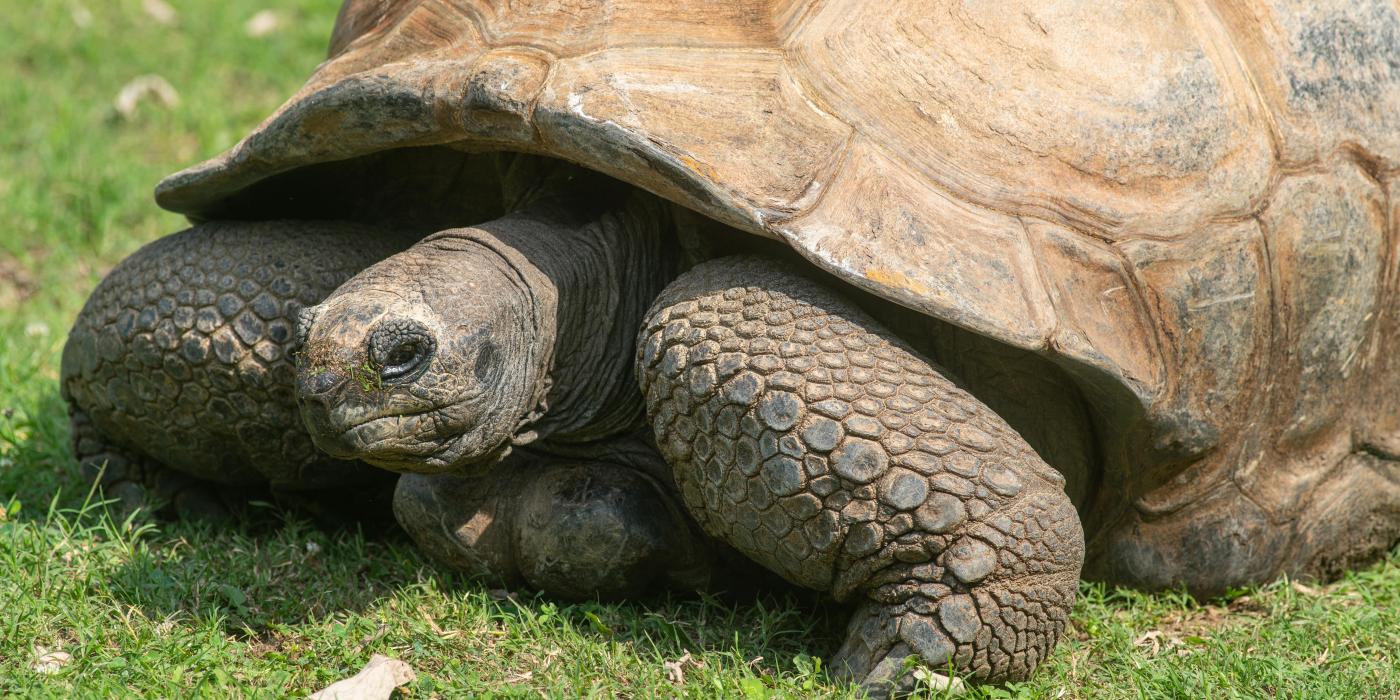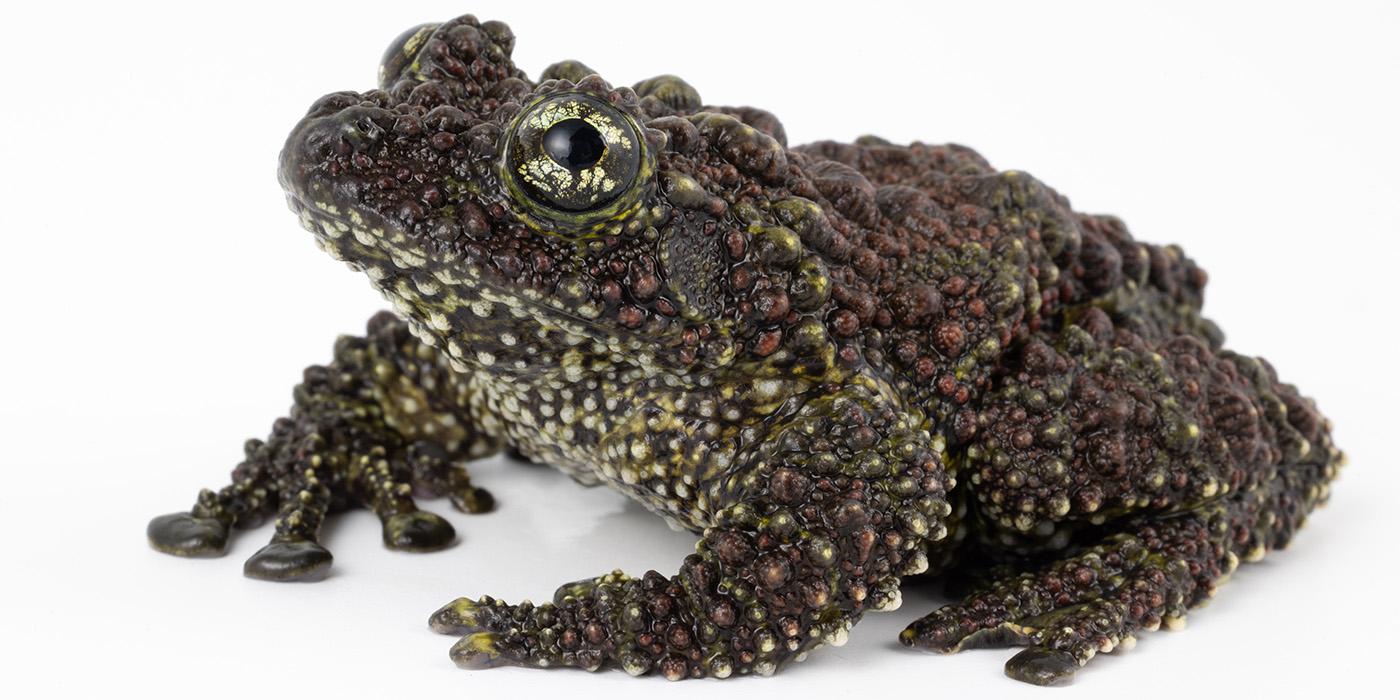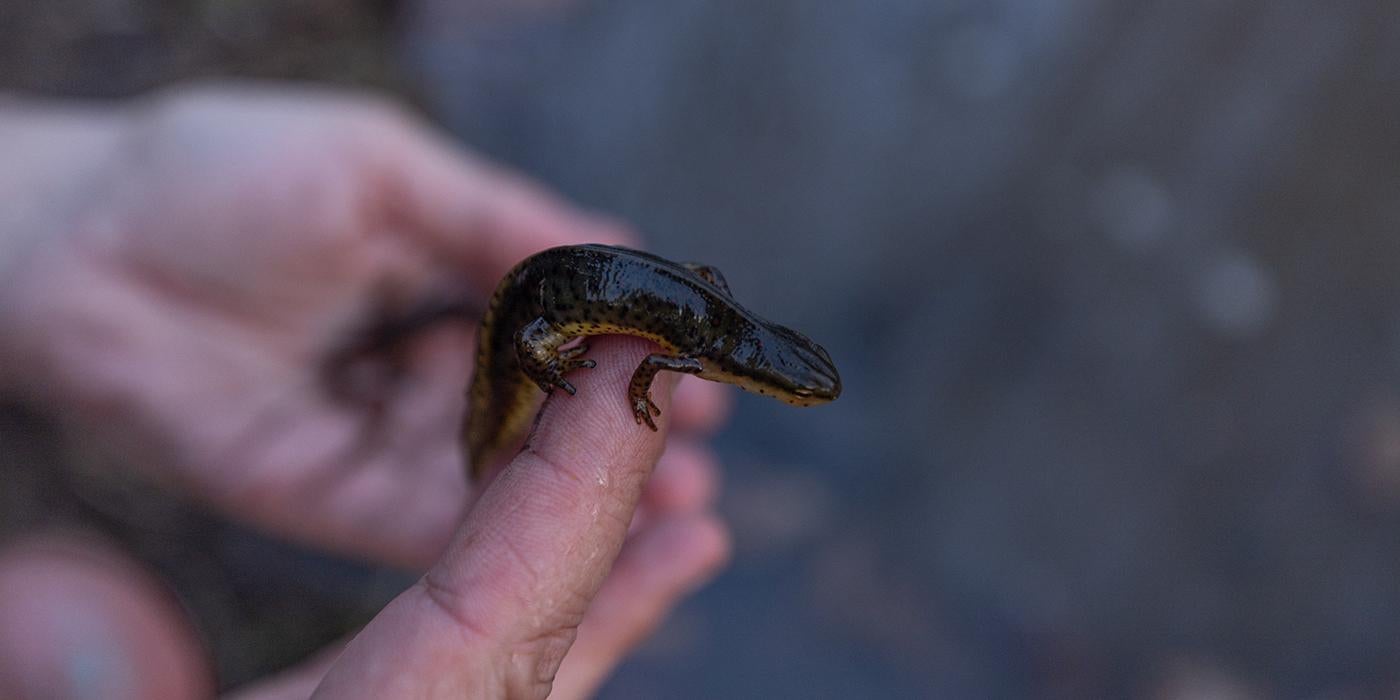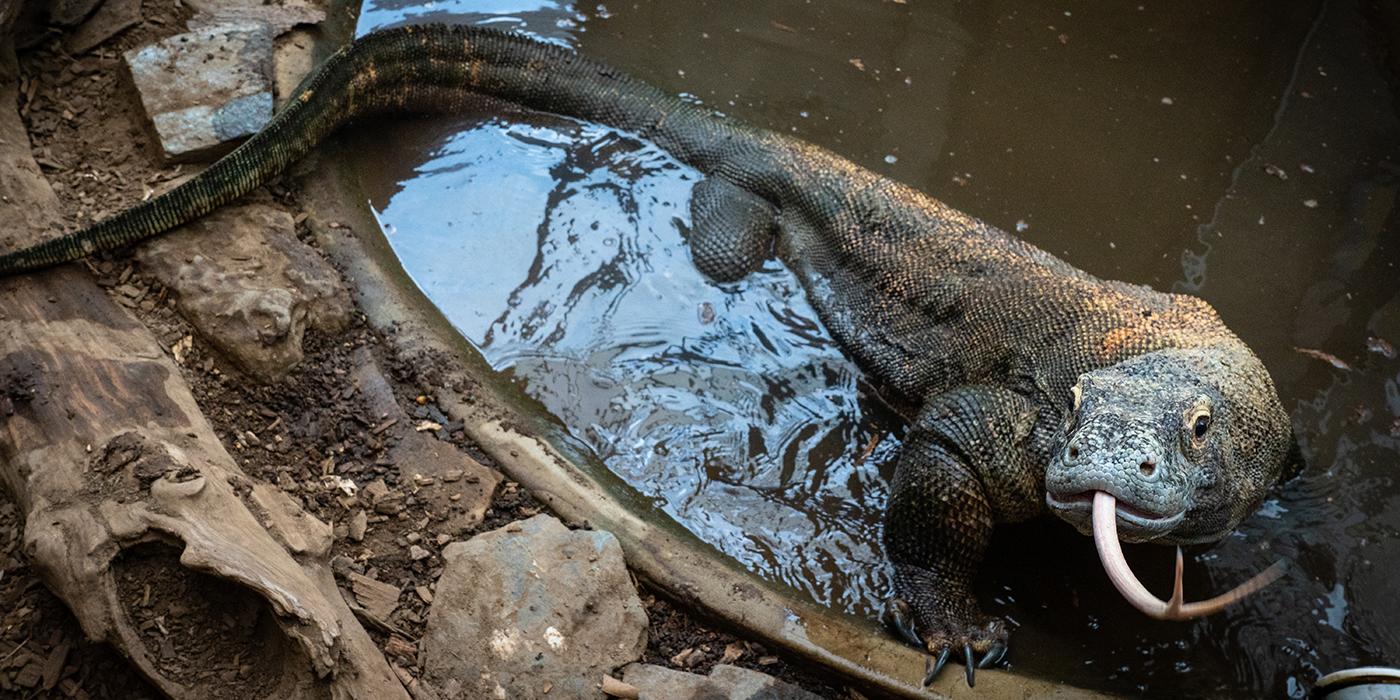Meet Our Cool Creep of Aldabra Tortoises
Years before I was born, the Reptile Discovery Center’s adult Aldabra tortoises Rulon and Chyna came to the Smithsonian’s National Zoo. They will be here long after my generation is gone. As one of the longest-living animals on earth, they see a lot more that we humans do in our lifetime.
When Rulon and Chyna arrived from the Seychelles Islands in 1976, they were full grown adults and estimated to be at least 25 or 30 years old. They could have been much older, though. Since they hatched in the wild, we will never know their exact ages, but our animal care staff estimates them to be a minimum of 80 years old today. Despite being the oldest animals at the Zoo, they still have many years ahead of them—Aldabra tortoises can live 150 years or more on average. The oldest recorded Aldabra tortoise lived to be 255 years old!
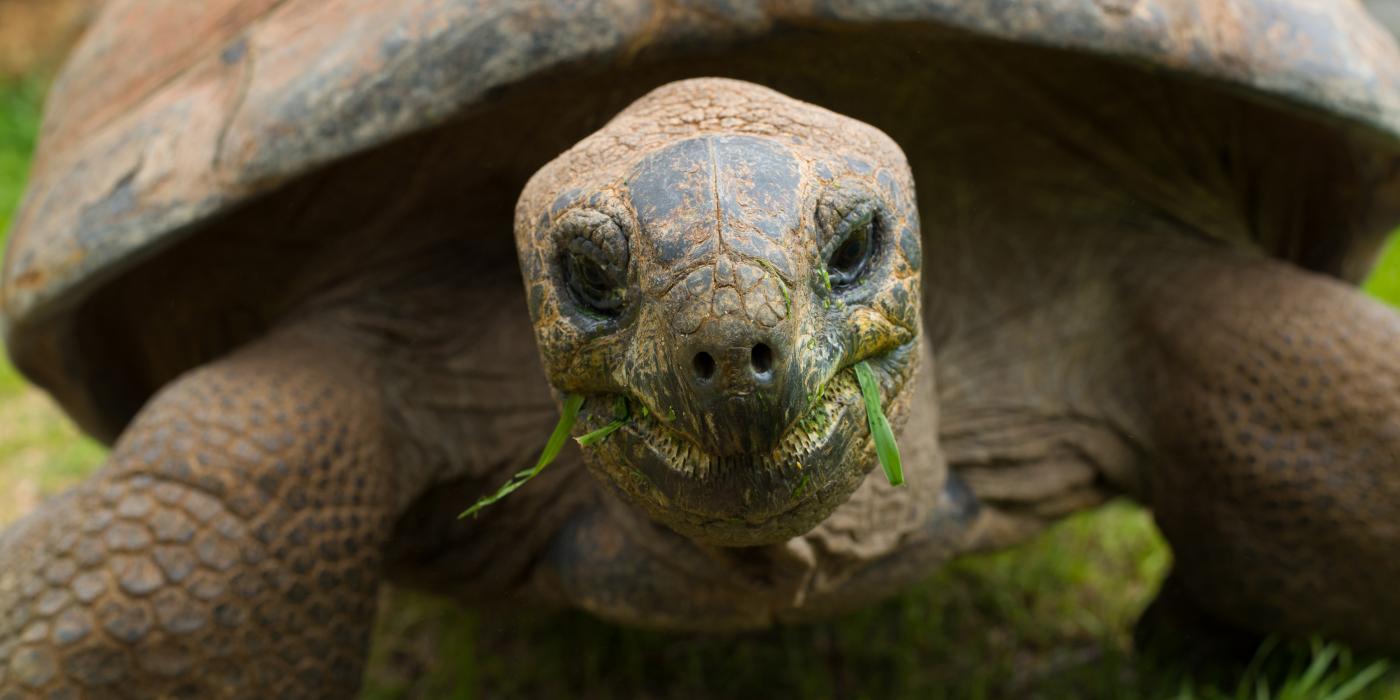
When I became a keeper at the Zoo, the first animals I cared for were the Aldabra tortoises. When you work with an animal every day, you come to know their personality quirks, likes and dislikes. Chyna and Rulon are very different. Whereas she is very inquisitive and food-motivated, he tends to be a stubborn old man who needs a lot of incentive to move.
It is partly because of his size; adult male Aldabra tortoises are nearly four times the size of adult females. All that weight means it takes more effort for Rulon to do anything. Compared to his 520 pounds, Chyna’s 150-pound frame seems petite.
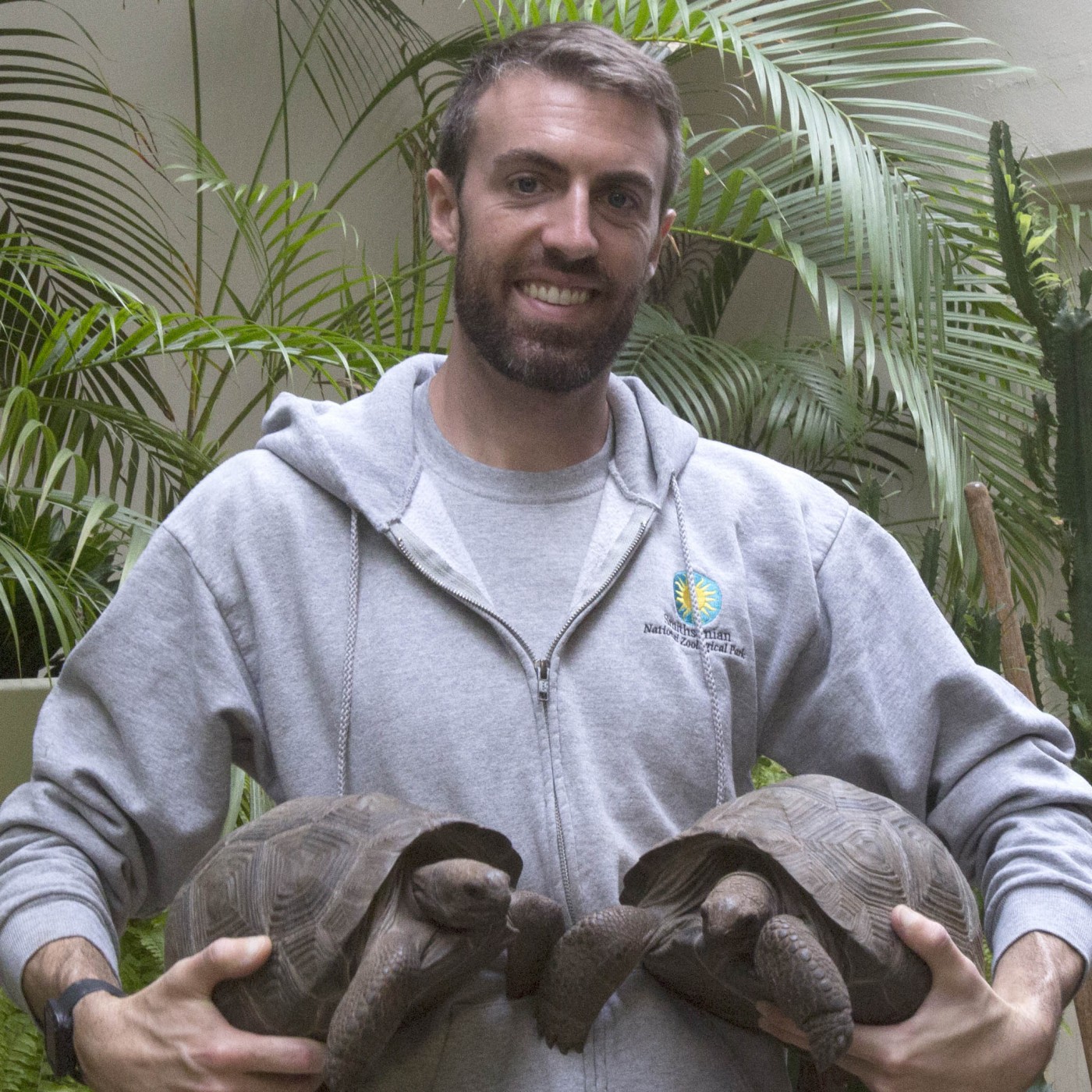
Even smaller than Chyna are our newest Aldabra tortoises, who came to the Zoo in summer 2019 from the Henry Doorly Zoo and Aquarium in Omaha, Nebraska. When they arrived 1.5 years ago, these tiny tortoises weighed 7 pounds and 9 pounds. Since then, they’ve tripled in size and have grown to 25 pounds and 30 pounds, respectively.
At 6 years old, they are still considered juveniles. Until Aldabra tortoises reach sexual maturity (usually around their mid-20s), both sexes look identical. So, we don’t know whether they are male or female! As they age, the dome of a male’s carapace (shell) becomes more pronounced, and his plastron (underside) becomes concave to assist with breeding.
That massive shell is one of the Aldabra tortoise’s most striking features. Once common misconception is that their shell is an independent structure, like how a hermit crab might occupy a deceased snail’s shell. In actuality, a tortoise’s shell is part of its skeletal system, and its spine runs along the inside of the dome.
There is not much cushion between the shell’s outer layer of keratin and the tissue underneath, which is full of nerve endings. This means that an Aldabra tortoise can feel when its shell is being touched! Every now and then we give Rulon and Chyna a gentle pat or scratch, and they seem to relish in the attention they receive.
Our juvenile Aldabra tortoises, like many young animals, are a bit skittish around people and tend to move away or hide when we enter their habitat. Unlike terrestrial box turtles, this species lacks the hinge that enables other turtles to “hide” in their shells. However, they can partially draw into their shell for protection.
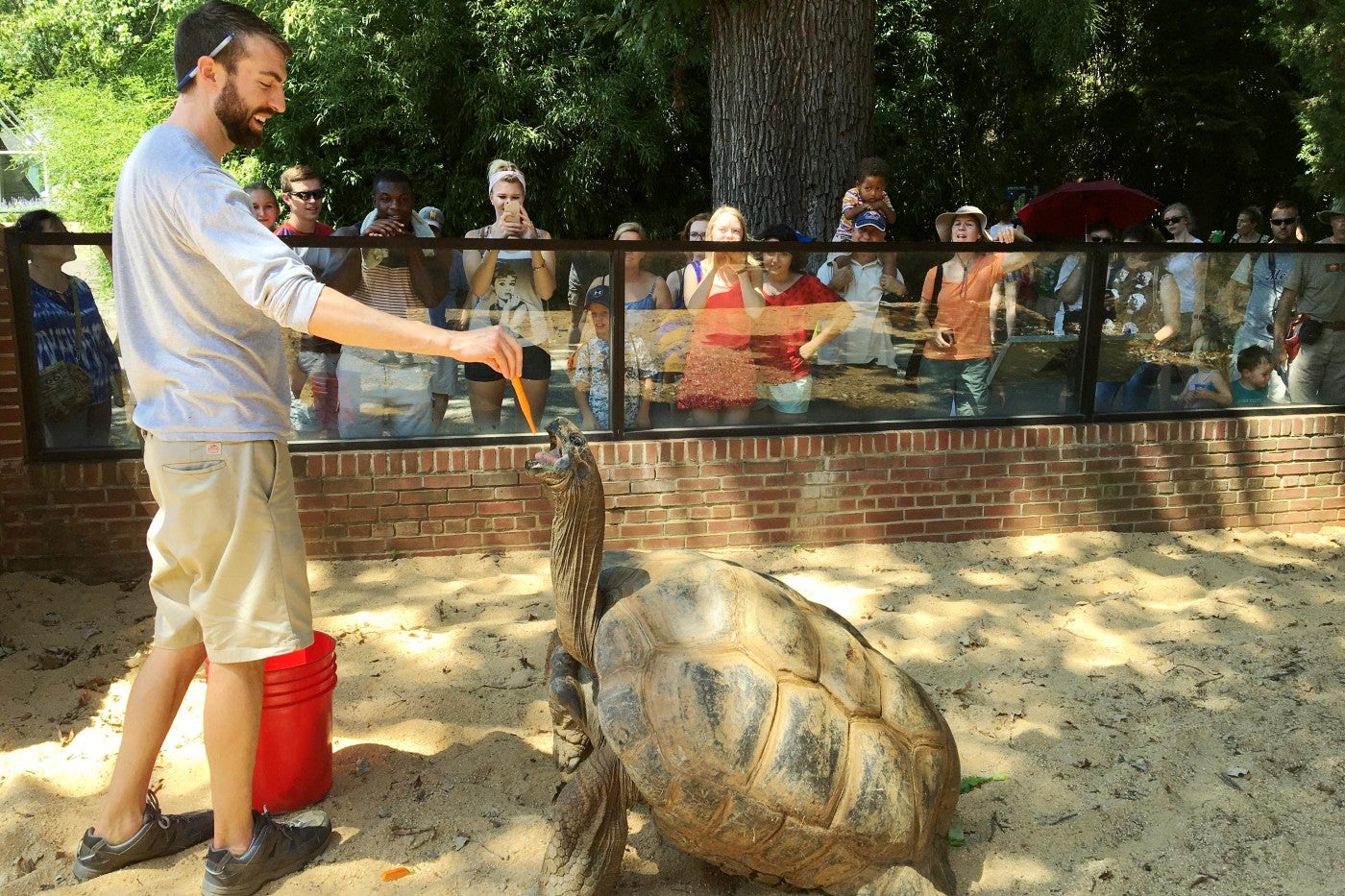
We are working on acclimating the juvenile tortoises to our presence. With many animals—tortoises included—the way to their heart is through their stomach. In the wild, adult Aldabra tortoises mostly eat grasses that grow on the granite rock islands. Juveniles eats herbs and vegetation. Here at the Zoo, their nutritionally balanced diet consists of mixed greens, chopped mixed grass hay, fortified pellets, romaine lettuce and carrots.
By offering our tortoises a variety of foods, we can also get a good sense of which treats they prefer. It is important that we build relationship with them and earn their trust. Doing so helps ensure that their encounters with us are stress-free for everyone involved.
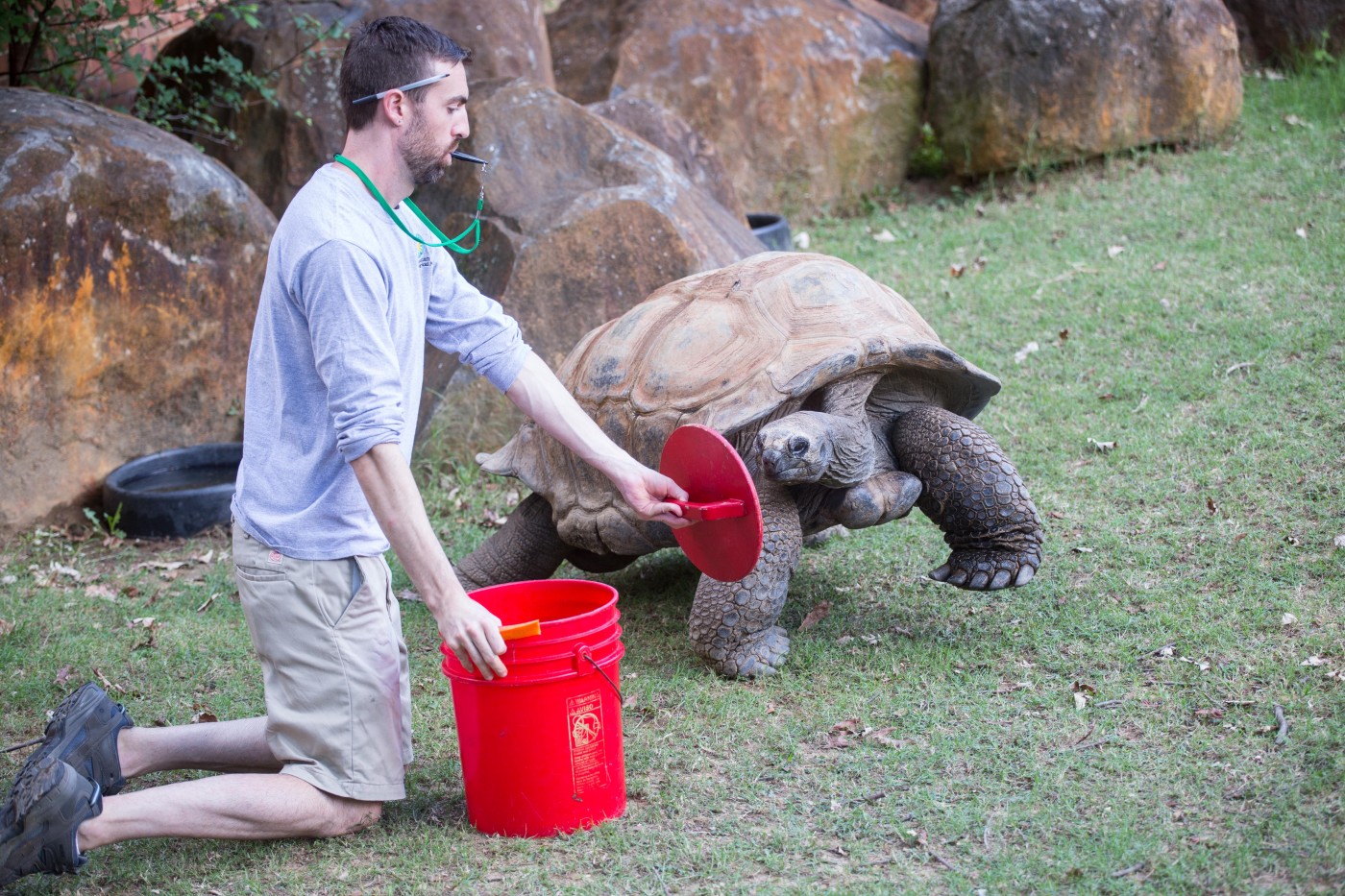
Carrots seem to be the tortoises’ favorite food, so we use them often during husbandry training sessions. We teach our animals behaviors that enable us to care for them and monitor their health. The tortoises always have a choice of whether or not to participate, but they know they’ll get a food reward if they do—which is a big motivator.
One of the training sessions I do with Rulon and Chyna involves asking them to follow a bright red target from the outdoor habitat to their indoor enclosure at the end of the day. As the tortoises follow the target and touch their noses to it, I offer them a bite of carrot. Tortoises don’t have teeth; rather they have a serrated beak that shears vegetation. With each bite, the tortoises pause, grind up their meal, then swallow before stepping toward the moving target.
The work we have put in over the years has paid off. It used to take me an hour-and-a-half to get them inside; now, it takes only 20 minutes. Rulon, Chyna and I have become more in tune with each other over the years, and it’s been really rewarding seeing how far they’ve come with this training! Our juveniles are small enough that we can pick them up and move them around, but eventually they will have an opportunity to participate in target training, too.
Tortoises have a reputation for moving slowly, but they are quick when they want to be! Aldabra tortoises are very methodical and deliberate in their movements and can go almost anywhere—it just takes a while.
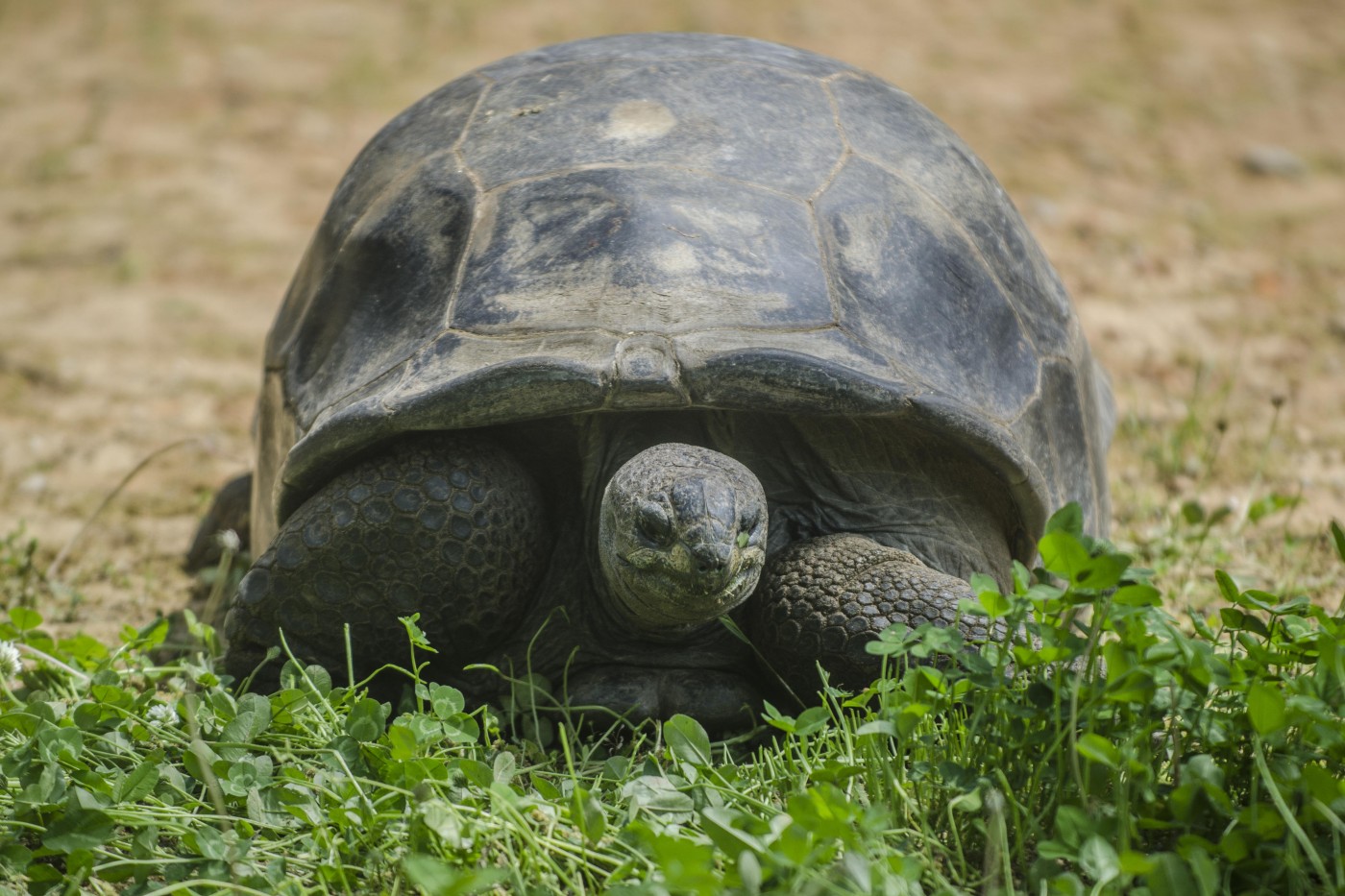
I want to help Aldabra tortoises! What can I do?
One of the best parts of being a keeper is working with amazing animals like Rulon, Chyna and our juvenile Aldabra tortoises. Getting to share their stories—and those of their wild cousins—is another. Although Aldabra tortoises only live on their namesake atoll today, they used to live on other Seychelles Islands, including Madagascar, Mauritius, Reunion and Rodriguez. For centuries, sailors hunted these tortoises for food. By 1840, only a small number remained.
Today, they are only found on Aldabra, and populations have bounced back to more than 100,000 individuals. The International Union for Conservation of Nature considers them vulnerable to extinction because habitat destruction and poaching remain a threat. Many reptiles that share their atoll are still considered endangered and critically endangered.
The good news is that we can help Aldabra tortoises and their neighbors. Teach others by sharing the tortoises’ stories and fun facts about them; responsibly support ecotourism when you travel and refrain from eating turtles and tortoises. You can also help native reptiles in your own backyard by picking up litter, providing proper habitat, and following the three Rs: reduce, reuse, recycle.
During your next visit to the Zoo, I hope you will stop by the Reptile Discovery Center and say hello to our charming and charismatic creep of Aldabra tortoises!
This story was featured in the April 2021 issue of National Zoo News.
The Smithsonian’s National Zoo is temporarily closed to help prevent the spread of COVID-19.Our whole team works diligently to care for our animals and keep you connected to the Zoo. With your support, our conservation mission continues. If you can, please join us in this important work by making a donation today. On behalf of the animals we care for and work to protect: thank you.
Related Species:

